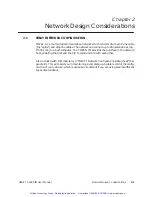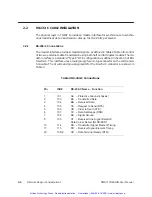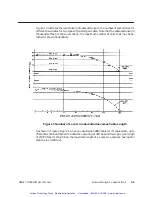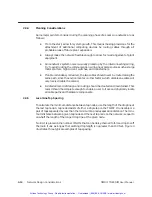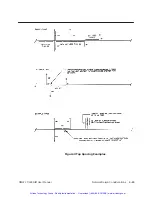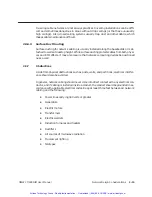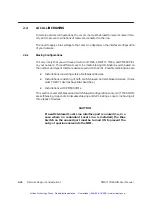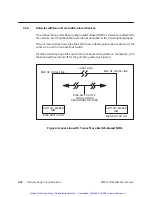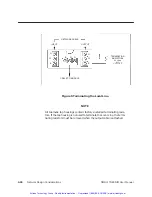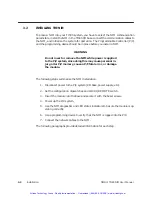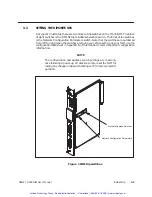
Network Design Considerations
2-14
TIWAY 1 TI505 NIM User Manual
2.3.6
Cable Routing
Cable routing should be planned as if the path between all stations on the network were
free of obstructions. Next, modify the first routing to account for obstructions, then calcu-
late the amount of cable needed.
CAUTION
All local and national electrical codes and fire codes should be observed
when installing wiring.
In general, there are three types of network cabling routes:
Under-floor
In-ceiling
Surface ducting
Any choice of these three routes may be used on a single network. The choice is often de-
termined by whether the building (or buildings) in which the network is being installed is
new construction, or is an existing building. The following paragraphs describe some of
the advantages and disadvantages of each type of cable routing.
2.3.6.1
Under-floor Routing
For under-floor routing, the cable can be enclosed within ducts or, with raised flooring, in
the “open air.” Under-floor systems enclosed in ducts are usually expensive, and while
they are better-protected against unauthorized taps than are “open air” systems, they
often make future expansion of the network more difficult and expensive.
“Open air” under-floor cabling systems usually provide good access and allow maximum
network expansion and flexibility.
2.3.6.2
In-ceiling Routing
For in-ceiling routing, network cables are usually supported in troughs or with hooks
and clamps every 10 or 15 feet. In-ceiling installations provide flexibility, usually cost
less, and provide easy access.
Artisan Technology Group - Quality Instrumentation ... Guaranteed | (888) 88-SOURCE | www.artisantg.com


